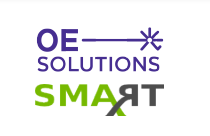 SENDATE, the Celtic-Plus flagship project for secure networking of data centers in Europe, completed a multi-vendor SDN field trial featuring real-time planning of transparent high-speed services across a disaggregated, multi-domain optical network.
SENDATE, the Celtic-Plus flagship project for secure networking of data centers in Europe, completed a multi-vendor SDN field trial featuring real-time planning of transparent high-speed services across a disaggregated, multi-domain optical network.The SENDATE trial was conducted in the Telia Company R&D lab in Stockholm with live connectivity to production network fibers, the multi-vendor, multi-domain trial included participation from optical networking and SDN solution suppliers and research partners, including ADVA, Coriant, highstreet technologies, VPIphotonics, and the RISE Research Institutes of Sweden.
The trial demonstrated end-to-end wavelength service activation between disaggregated transponders spanning SDN-enabled ADVA and Coriant optical domains.
Use cases tested during the trial included dynamic optical reach planning using open APIs and SDN-enabled 100G and 200G alien wavelength provisioning across multi-vendor optical domains. The successful interworking leveraged an extension of the standardized ONF T-API interface significantly enhanced and extended with optical impairment capabilities for automated network planning. The SDN controller was based on OpenDaylight with an integrated photonic planning app running as a micro-service.
More information on the field trial will be presented at the ECOC exhibition on 24-26 September in Rome, Italy. Visit the VPIphotonics booth 302.
SENDATE participants said the trial showcased the critical role that standards-based SDN interworking and integrated planning play in simplifying operations and reducing end-to-end provisioning times in multi-domain, disaggregated optical networks.
“As new high-bandwidth end-user applications drive increased demand for photonic layer connectivity, service providers face the real-world challenge of provisioning across multi-vendor optical networks. Today these networks are operated as separate domains involving proprietary and mostly offline planning,” said Mauro Costa, Director Network and Infra Architecture, Telia Company. “An open and integrated approach to multi-domain service planning helps solve this challenge. In combination with SDN-based orchestration of multi-vendor transport elements, including open line systems, integrated and real-time service planning paves the way for a more agile and automated optical infrastructure capable of meeting stringent performance demands of new services, including 5G.”
SENDATE, Secure Networking for a Data Centre Cloud in Europe, is a 70 million euro public-private partnership project comprising 83 companies, research organizations, and universities from Germany, France, Finland, and Sweden.
https://www.celticplus.eu/celtic-plus-project-sendate-simplifies-operations-of-open-optical-networks/





















